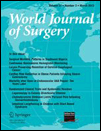Liver Transplantation for Primary Hyperoxaluria Type 1: A Single-center Experience during Two Decades in Japan
Abstract
Background
Primary hyperoxaluria type-1 (PH1) is an autosomal recessive disorder caused by impaired activity of hepatic peroxisomal alanine-glyoxylate aminotransferase that leads to end-stage renal disease (ESRD). A definitive diagnosis is often delayed until ESRD appears. Based on the etiology, liver transplantation (LT) seems to be the definitive treatment.
Patients and Methods
Three PH1 patients underwent LT at our institution during two decades.
Results
Two of the patients had family histories of cryptogenic ESRD. All three showed disease onset in childhood, but the definitive diagnosis was delayed in two cases (17 and 37 years of age). These delayed cases resulted in ESRD, and hemodialysis (HD) had been introduced before LT. One patient received domino LT, and the other two underwent living-donor LT (LDLT). One patient finally died of sepsis, and was unable to receive a kidney transplantation (KT) after the domino LT. One patient did not show ESRD, and did not have to undergo KT after LDLT, although extracorporeal shock wave lithotripsy was required for residual ureterolithiasis (8 years after LDLT). The third patient had an uneventful course after LDLT and received living-donor KT from the same donor 8 months after LDLT. Subsequently, HD was successfully withdrawn.
Conclusions
Establishment of a definitive diagnosis of PH1 is essential. If a methodology for early diagnosis and an intensive care strategy for neonates and infants during the waiting time become well-established, a timely and preemptive LT alone can provide a good chance of cure for PH1 patients.




